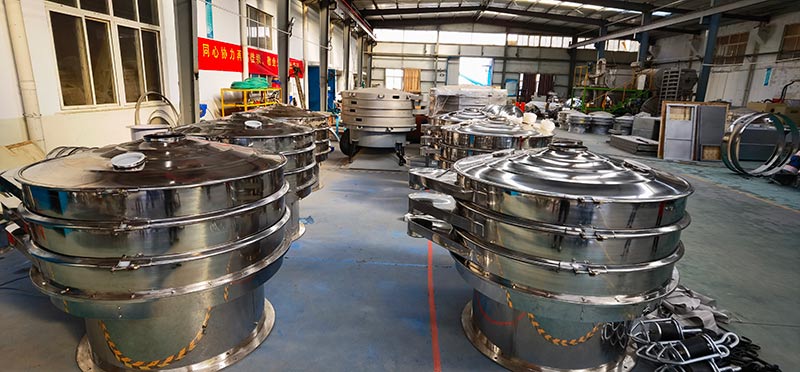In the ever-evolving landscape of industrial manufacturing, efficiency and productivity are paramount. Vibrating sieving machines, also known as vibratory screeners, have emerged as indispensable tools for streamlining material handling and processing operations across various sectors. From mining to food production, these versatile machines play a pivotal role in enhancing productivity and optimizing workflow. Let's explore how vibrating sieving machines are revolutionizing industrial processes and driving business success.
Vibrating sieving machines are engineered to sift, separate, and classify materials of different sizes efficiently and accurately. At the core of their functionality is a vibrating motor that generates rapid oscillations, causing particles to move strategically across a screen surface. This dynamic motion enables effective separation based on particle size, ensuring that only materials meeting desired specifications pass through the sieve.
One of the primary advantages of vibrating sieving machines is their ability to handle a wide range of materials and applications. Whether it's screening aggregates in construction or separating powders in the pharmaceutical industry, these machines offer versatility and adaptability to meet diverse manufacturing needs. Their modular design allows for easy customization and integration into existing production lines, thereby improving overall efficiency and throughput.
By automating the screening process, vibrating sieving machines significantly reduce manual labor and minimize processing times. This leads to increased productivity, as more materials can be screened in a shorter period, resulting in higher output and reduced operational costs. Moreover, the precise particle separation achieved by these machines enhances product quality, ensuring that only materials of the desired size and consistency are utilized in downstream processes.
In addition to improving productivity, vibrating sieving machines contribute to sustainability efforts by minimizing waste and resource consumption. By efficiently sorting materials and removing impurities, these machines help reduce the need for raw materials and mitigate environmental impact. Furthermore, their energy-efficient operation and minimal maintenance requirements make them environmentally friendly alternatives to traditional screening methods.
The continuous innovation in vibrating sieving technology has led to the development of advanced features and capabilities that further enhance their performance and reliability. From high-frequency screeners to multi-deck systems, manufacturers are constantly introducing new solutions to meet the evolving needs of industry. Integration with digital monitoring systems and predictive maintenance algorithms enables proactive equipment management, minimizing downtime and maximizing uptime.
In conclusion, vibrating sieving machines play a vital role in optimizing industrial processes and driving productivity gains. Their ability to automate the screening process, improve product quality, and reduce environmental impact makes them indispensable assets for businesses striving for excellence in today's competitive market. By embracing the latest advancements in vibrating sieving technology, industries can unlock new levels of efficiency and achieve sustainable growth in the years to come.

 24 Hours Online Service For You: +86 13462227588
24 Hours Online Service For You: +86 13462227588

